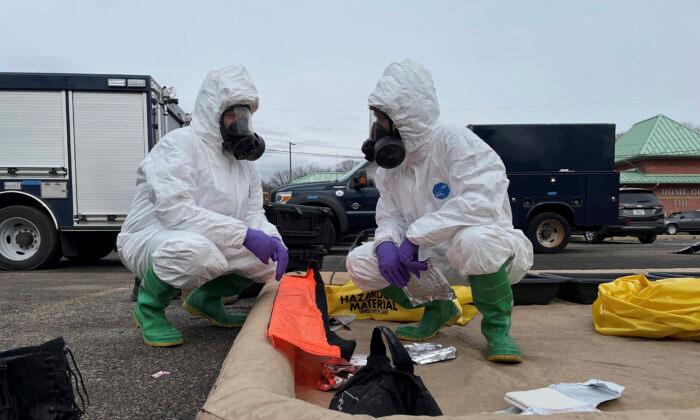A top Ohio environmental official on Tuesday confirmed a “plume of chemicals” in the Ohio River is currently moving downstream after a train derailed in East Palestine that was carrying toxic chemicals.
When pressed further, Kavalec said that the plume is comprised mainly of “fire combustion chemicals.” There could also be multiple “volatile organic compounds” that were being carried on the train in the Ohio River but are “very diluted,” she said.
Ultimately, she said that the plume is moving around 1 mph down the Ohio River, saying it is diluting as it travels downstream. The Ohio EPA doesn’t believe the plume is threatening the quality of drinking water, she added.
But chemicals associated with the train derailment did “flow to the Ohio River” during the initial incident, Kavalec said. The Ohio River is “able to dilute the pollutants pretty quickly,” Kavalec added, saying that “we are seeing very low levels of contaminants” in the river.
Meanwhile, train operator Norfolk Southern is “actively aerating” the area around the Sulfur Run waterway in East Palestine, “which remains contaminated,” Kavalec added.

As of Feb. 10, or about a week after the train derailed, butyl acrylate and ethyl hexyl acrylate were discovered in Leslie Run, located below Sulfur Levels. Both butyl acrylate and ethyl hexyl acrylate dissipated to “non-detectable levels” after a short trip downstream, she said
No vinyl chloride was found in either of the waterways or the Ohio River, Kavalec added.
“There are very very low levels of volatile organic compounds in the Ohio River itself,” she said. “It appears it’s been very diluted.”
On Monday, a municipal water company serving Louisville, Kentucky, told local media outlets that the chemical butyl acrylate—confirmed to be carried on the derailed train—was observed in the Ohio River.

“What we are seeing is really low levels of a compound called butyl acrylate,” Chris Bobay, a water quality manager with Louisville Water Company, told local media. “Butyl acrylate is an ester and esters are known for imparting very strong odors to the water at higher concentrations. The levels we’re seeing, we don’t expect there to be any odor issues. But we have developed a treatment strategy to make sure that we remove the odors if they’re there.”
But Bobay said officials are not seeing elevated levels of the chemical in the Ohio River in Louisville, located about 300 miles from the East Palestine derailment site. “We can detect butyl acrylate as low as .5 parts per billion, but we’re not getting detections currently,” Bobay told Spectrum News.
And earlier this week, Ohio officials reported that thousands of dead fish were found in several waterways around East Palestine. Some residents of East Palestine also claimed to local media that some of their animals died, while residents have said they’ve suffered from health problems after returning home.
Bruce Vanderhoff, the head of the Ohio Department of Health, said East Palestine residents should get their private wells tested. Women who are pregnant, breastfeeding, or preparing baby formula with that water should take caution, too, he added.
Later, DeWine said that the controlled burn of materials on the train was deemed the best decision after he was told that chemicals on the train could trigger a catastrophic explosion.





